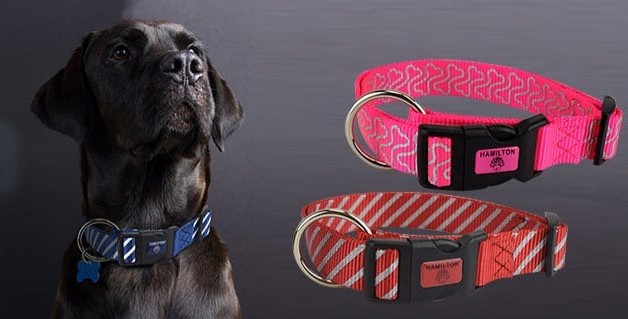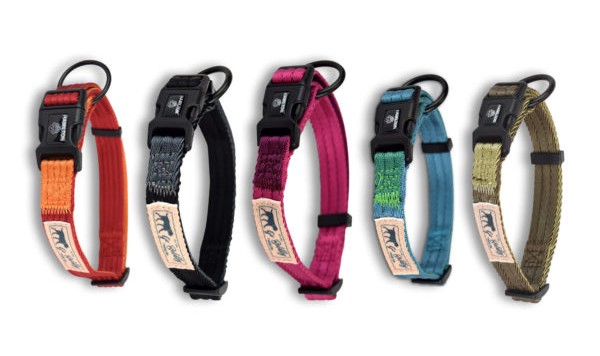
NEWS – When we brought home our cute little rescue dog, I was flummoxed when she tore her own collar right off. I thought it might have been a fluke. Until she did it a second time with a brand new collar.
There’s nothing scarier than living near a busy street with a dog who can pull her own collar right off.
My husband’s an engineer, so when he picked out her next and final collar, he carefully studied the design to make sure it wouldn’t happen again. And it hasn’t!
If your pup likes to pull or goes bonkers for bunnies, consider a Hamiton collar. They have a reinforced design where you feed the clasp through the O-ring, and there’s a fabric guard so you don’t have to worry about pinching their fur when fastening. Unlike my dog’s previous collars, pulling on the O-ring of this type of collar doesn’t yank open the clasp.
While my dog’s first two collars each lasted less than a week, her Hamilton collar is going strong on year four.

Find these collars at several pet supply stores, just use their product finder to find the retailer closest to you. They’re also available on Amazon, from $6.02 to $17.50 depending on the size, style, and design. Hamilton also makes harnesses, leashes, and tie-outs for dogs, as well as products for other animals.




Gadgeteer Comment Policy - Please read before commenting
It is worth noting that pulling on a leash may have consequences for laryngeal paralysis in a dog. This disorder can have serious quality of life or life-threatening consequences. There are other causes of this disorder, but neck trauma from ongoing pulling or a single event can have long term consequences. One of my dogs has laryngeal paralysis and I was unaware of the potential effects of pulling on a leash. My vet commented that if the dog cannot walk on a slack leash, then a harness if preferable. An internet search for information about the relationship between laryngeal paralysis, dog collars, and pulling on a leash is easy to find.
My dog does what she wants when on a harness (not controllable).
Mine has stretched out a fair number of harnesses, too. This has been my favorite so far, mostly because of the handle. https://the-gadgeteer.com/2019/11/21/poypets-harness-gives-dog-owners-peace-of-mind/
some dogs really like pulling
on our most determined pups we used rope “choke” leads or collars
they don’t choke unless they are tucked up under the jaw…none our dogs pulled after the initial choke…no jerks or hard pulls, just the dog’s own pull
until max…max is/was incorrigible
while disrupting a training class, the trainer slipped martingale around her neck, pulled the leash down between her front legs, made a loop around her chest and threaded the looped end through the body loop…making a a harness/collar hybrid
when max pulls too hard the martingale tightens on her neck (back to front) and the leash constricts her chest…at first she came to a dead stop, now she just heels
as an aside, we haven’t used collars for controlling our canines for decades…the collar merely carries their tags and looks nice…we had too many break or come off when our dogs pulled backwards
we use the one piece rope or harness leather leads often called “English leads” like this…https://www.amazon.com/British-Style-Slip-Lead-Blue/dp/B004XJL8M8?th=1
the only caveat I can add is they need to be made of good rope and use good hardware
when I make my own I buy hanks of climbing rope and clean up the welds on the rings (or forgo them altogether)
The collar in the picture is in the wrong place. It should be as close to the jaw as possible.
The collar and leash are meant to control the dog, not to restrain him.
You control the dog by pulling up. Never pull back because this will encourage the dog.
Working dogs need to pull weight in order to spend their excess energy. Make/buy a rucksack or cart, put in groceries or water botlles and make that working dog work.
When going on a walk on a leash the dog must first be calm before leaving the house.
You always lead the dog when walking, the dog follows.
You are relaxed but strong because you lead the pack.
Rewarding good behaviour does not need words or treats. Simply enjoying a calm well behaved dog is reward for the dog!